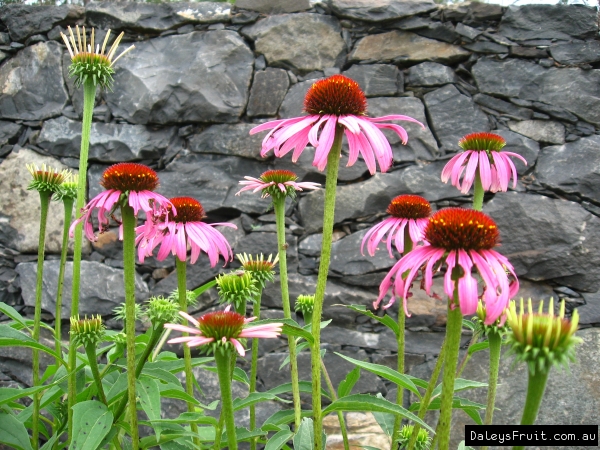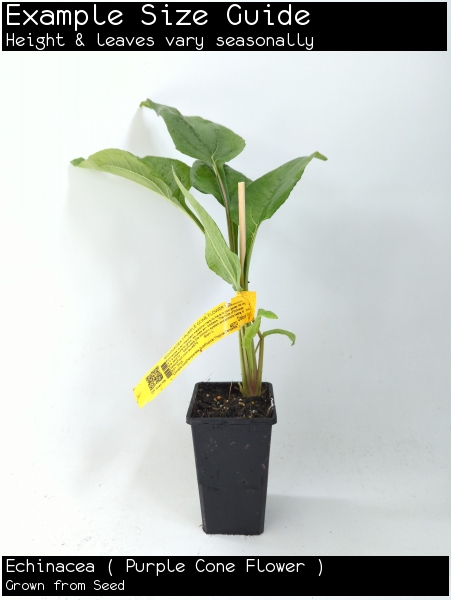Echinacea ( Purple Cone Flower )
Echinacea purpurea$5.95 ($4.90-$7.75 choose a size)
Specifications of Echinacea ( Purple Cone Flower )
Preferred Climate Arid (Dry), Cool Temperate, Subtropical, Tropical, Warm TemperateLearn About Climate Zones
Grown From SeedlingLearn About Propagation Methods
Max Height (when in the ground with good conditions) 0-1m
Can it Handle Frosts? Yes
Amount of leaves in Winter? No Leaves (Deciduous)
Quarantine Restrictions to these Areas WA
Customers also bought
These plants are often purchased together. Also check plant information for suitability in your orchard.
Jujube - Sherwood
$124.90 ($119.00-$149.00 choose a size)
Vanilla Vine
$29.00 ($24.00-$39.00 choose a size)
Exclusion Net - Extra Large (6M X 10M)
$69.00
Japanese Raisin
$34.00 ($17.90-$34.00 choose a size)
Pepino - Kendall Gold
$18.75 ($14.90-$19.90 choose a size)
Pepper - Black
$29.00 ($29.00-$39.00 choose a size)
Customer Tips & Reviews Echinacea ( Purple Cone Flower )
SHARON, QLD
Echinacea ( Purple Cone Flower )
I am so pleased with these as they have grown quite quickly and are now beginning to flower. They are in an edged garden bed where they receive morning sun and shade from mid afternoon.
Echinacea ( Purple Cone Flower )
A wonderful bee habitat plant and perfect for my medicinal herb garden.
TALLEBUDGERA VALLEY, QLD
Echinacea ( Purple Cone Flower )
the 10th of these I've purchased, good growers, and comes back after winter to flower better each year




























